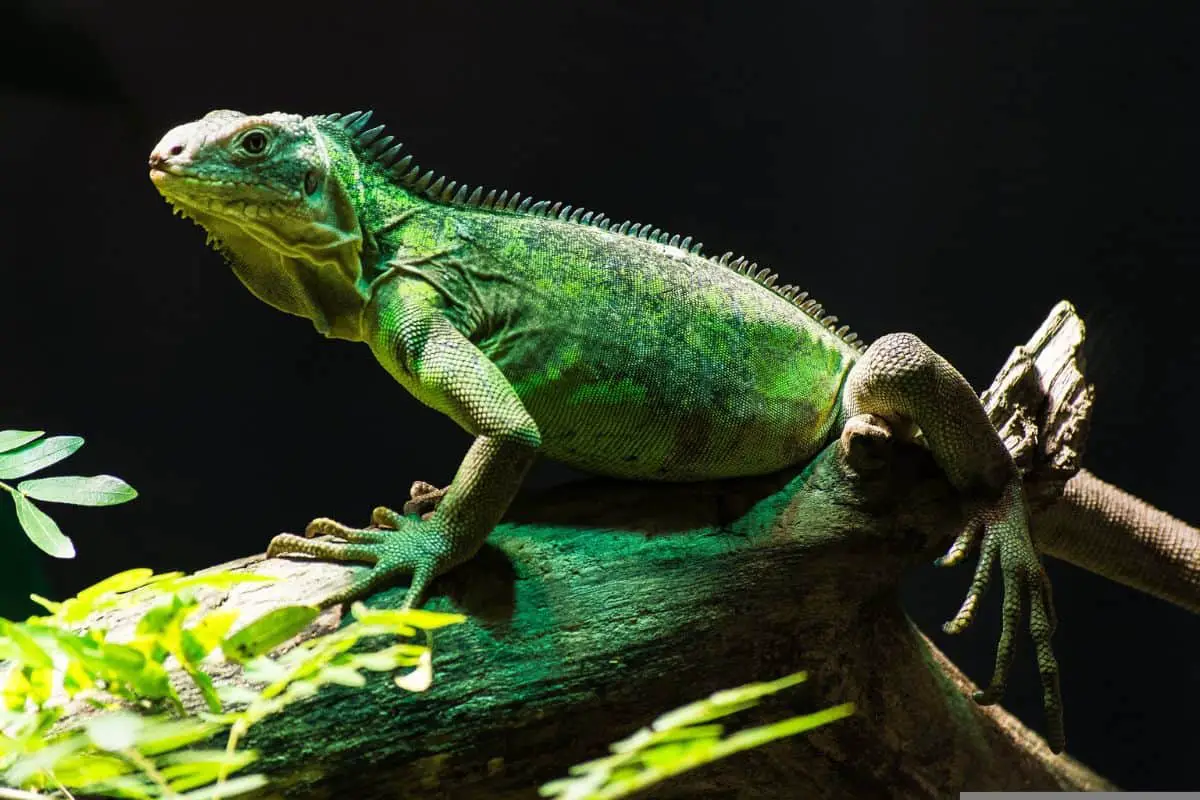A frog’s call is one of nature’s most distinct and recognizable sounds. If you’ve ever been camping or hiking, you’ve probably heard them croak. What about the sound of sheep, though? You may not have realized it before, but there are many frogs that sound like sheep in the wild. In this article we’ve listed 10 species of frogs that can sound similar to a bleating sheep when they croak.
10 Frogs that sound like sheep
1. Eastern Narrow-mouthed Toad
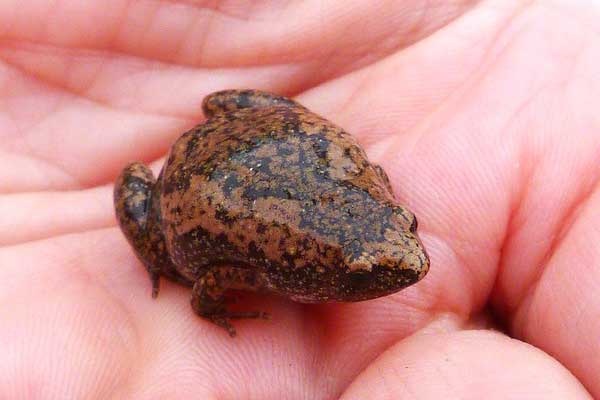
Scientific Name: Gastrophryne carolinensis
One of the toads found in North America is the Eastern narrow-mouthed toad. They’re black or gray in color, with a flat body that ranges in size from 1-1.5 inches.
These toads inhabit sand hills, pine-oak forests, and bottomland forests, burrowing themselves in soils or leaf litter. When heard from a distance, this toad’s call sounds like a sheep’s ‘baaing.’
During mating season, males make this noise to attract females. The sound travels through dense vegetation, allowing the male to locate his mate even when he’s out of sight of her. They breed in wet and grassy environments such as pond edges, marshes, and flooded fields and ditches.
2. Woodhouse’s Toad
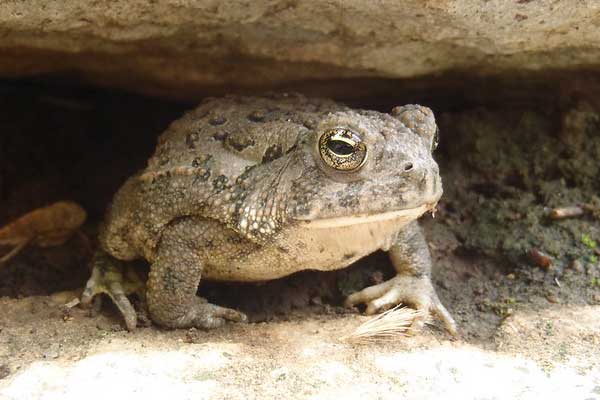
Scientific Name: Anaxyrus woodhousii
The Woodhouse’s toad is a frog species found in the United States and Mexico. It’s native to North America and can be found in New Mexico, California, Texas, Utah, Wyoming, and Oregon. You can find this toad in wooded areas near bodies of water, such as ponds, reservoirs, and lakes.
Woodhouse toad is a large creature that can reach 5 inches in length and are gray to light brown in color with dark blotches on its body. This frog has a distinct call that lasts up to 2-3 seconds and sounds like a bleating sheep. It uses its call to draw nearby females during the mating season.
3. Northern Sheep Frog
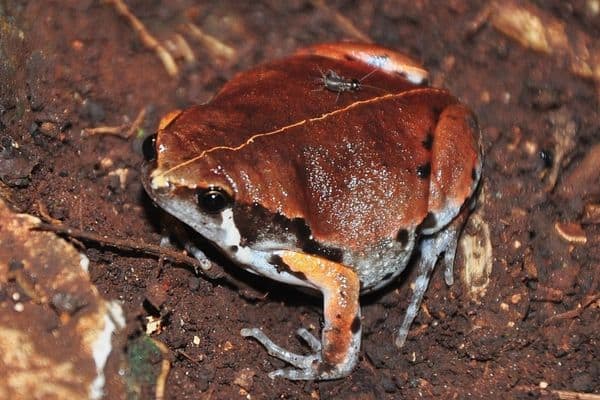
Scientific Name: Hypopachus variolosus
The Northern sheep is a small frog found primarily in Mexico and the United States. It prefers moist areas such as canyons, basins, and mountain slopes, but you can also find them in savannas, pasturelands, and open woodlands.
The body of this sheep frog is reddish to brown with irregular dark spots and measures about 1.5 inches long. As the name suggests, this frog sounds like a sheep bleating for about 2-3 seconds. It also eats small insects like ants, termites, and flies.
4. Couch’s spadefoot toad

Scientific Name: Scaphiopus couchii
This amphibian is a small, light-colored toad native to North America. It can grow up to 3 inches in length and has smooth skin that’s green, yellow, or olive in color. Their body has some irregular blotches, usually dark green, brown, or black.
Couch’s spadefoot is also notable for its distinct call. When you hear the sound of this spadefoot toad, you might think there’s an angry sheep nearby. It makes a groaning, bleat sound that attracts mates.
They’re also known to live in dry areas and prefer sandy soil to burrow into the ground for protection when threatened by predators or inclement weather.
5. Hurter’s Spadefoot

Scientific Name: Scaphiopus hurterii
Hurter’s spadefoot is a small frog in the Scaphiopodidae family. It’s found primarily in the eastern United States, more specifically in Louisiana, Texas, Arkansas, and Oklahoma. This species can reach a height of 3 inches and has an olive green color with faded spots all over its body.
They can also be identified by their cat-like eyes. You’ll also notice that the Hurter’s spadefoot sound is similar to short sheep or lamb bleats. They’re also burrowers, which means they prefer sandy soils where they can stay underground until mating season.
6. Fowler’s Toad

Scientific Name: Anaxyrus fowleri
The Fowler’s toad is a medium-sized amphibian with sheep-like vocalizations. It’s found in the Eastern United States, except for most of Florida, South Carolina, and Georgia’s Coastal Plains.
These toads are about 3.5 inches long with a stocky body that’s green or brown in color. They can be found in forests, agricultural fields, and marshes.
Fowler’s toads come out at night to hunt for food and burrow under rocks and soil during the day. Like those of woodhouse toads, their calls sound like sheep bleating, but they’re much higher in pitch.
7. Barber’s Sheep Frog

Scientific Name: Hypopachus barberi
The Barber’s sheep is a sheep frog found in El Salvador, Honduras, Mexico, and Guatemala. They’re known as sheep frogs because of the sound they make, which is similar to that of a sheep or lamb. During the breeding season, they use this sound to attract female frogs of the same species.
Barber’s sheep frogs have brown or gray backs with dark blotches and warts. They prefer humid pine-oak forests and feed on small insects in their natural habitat.
8. Sonoran Green Toad
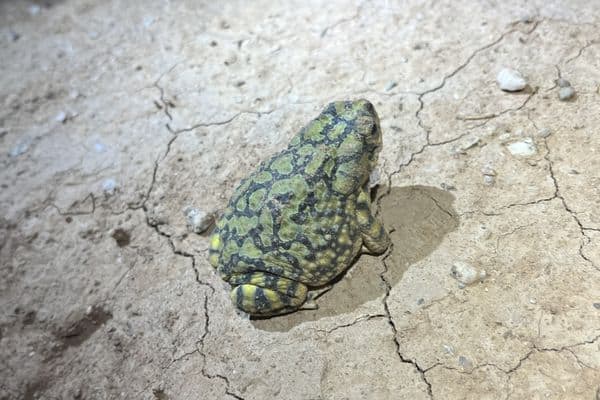
Scientific Name: Bufo Retiformis
The Sonoran green toad is a small amphibian that’s native to the United States and Mexico’s southwest and northern regions. These animals have a high-pitched ‘waaah’ sound that makes them sound like sheep. They also have a distinct appearance, with a greenish-yellow body covered in small black net-like lines.
These toads prefer to live in creosote bush flats and mesquite grasslands. They spend the majority of the year underground, emerging only during the wet season to breed and feed.
9. Western Narrow-Mouthed Toad

Scientific Name: Gastrophryne olivacea
The Western narrow-mouthed toad is a small, narrow-mouthed amphibian native to North America. You can find it throughout Texas, Kansas, Oklahoma, Arizona, and New Mexico.
This species has a distinct call that sounds like that of a sheep and can be heard from a long distance. The call is primarily used during mating season to advertise breeding grounds. Western narrow-mouthed toads are nocturnal creatures that become active at night when the weather is cooler.
They primarily feed on ants and have developed a skin secretion that protects their skin from ant bites while hunting in their natural habitat.
10. Bleating Froglet
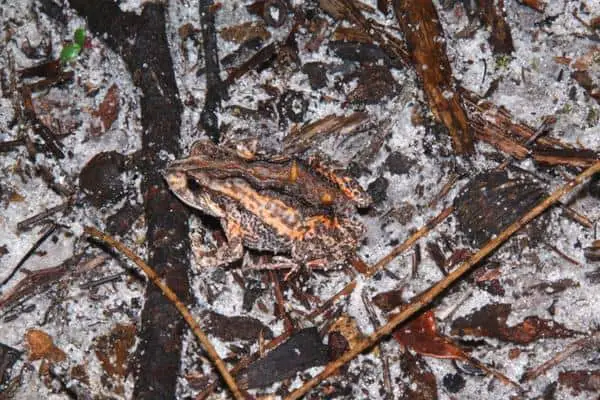
Scientific Name: Crinia pseudinsignifera
The bleating froglet is a small, dark-colored frog with a sheep-like “bleating” call. It lives in Australia’s wet forests, where it feeds on insects and other small invertebrates.
They have dark brown or gray skin with dark patches and spots that help them camouflage on the forest floor. The bleating froglet is very similar to many other species of Australian frogs, making identification difficult. One of the most common ways to identify a bleating froglet is by its call, which sounds like a sheep.



